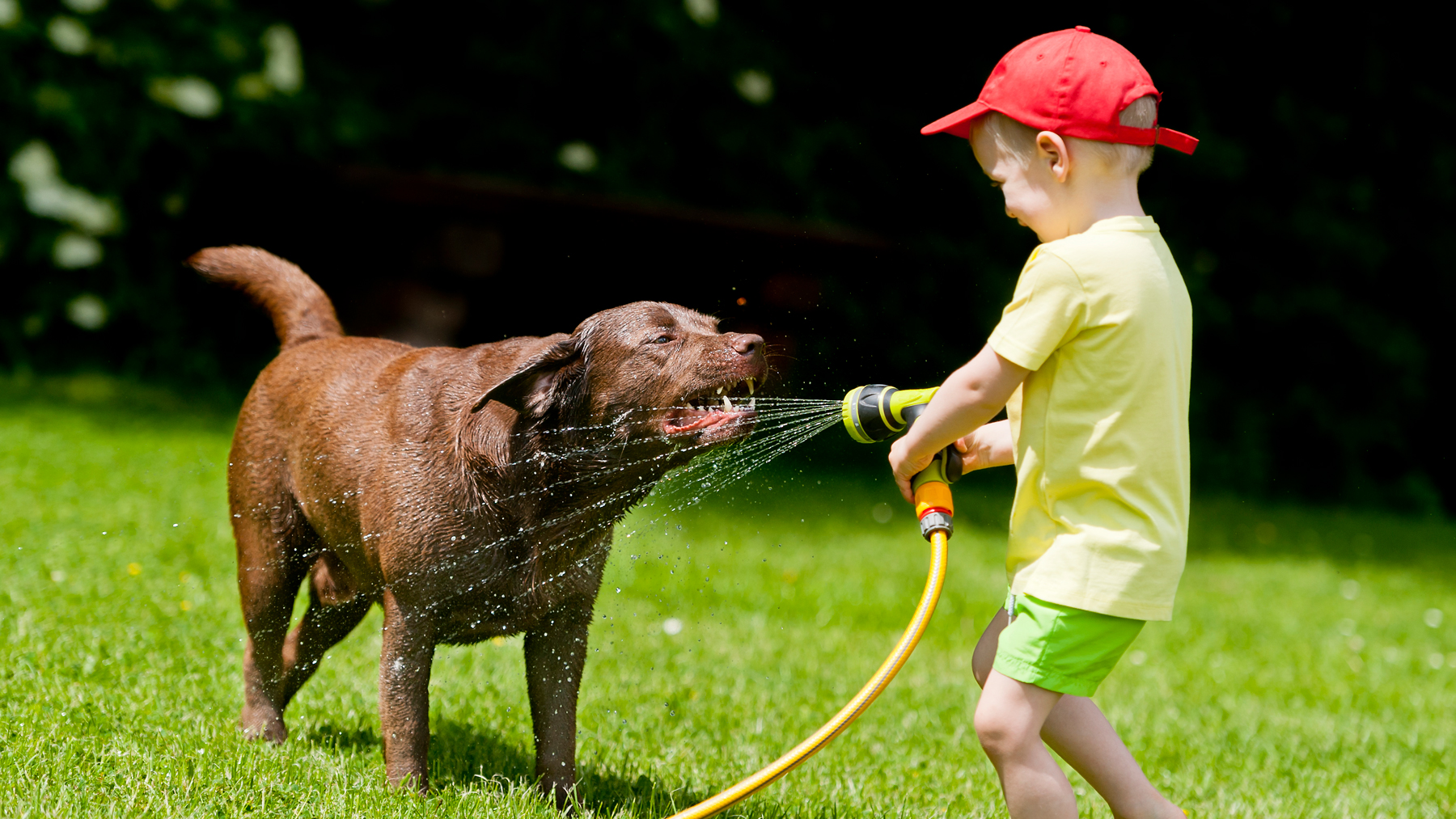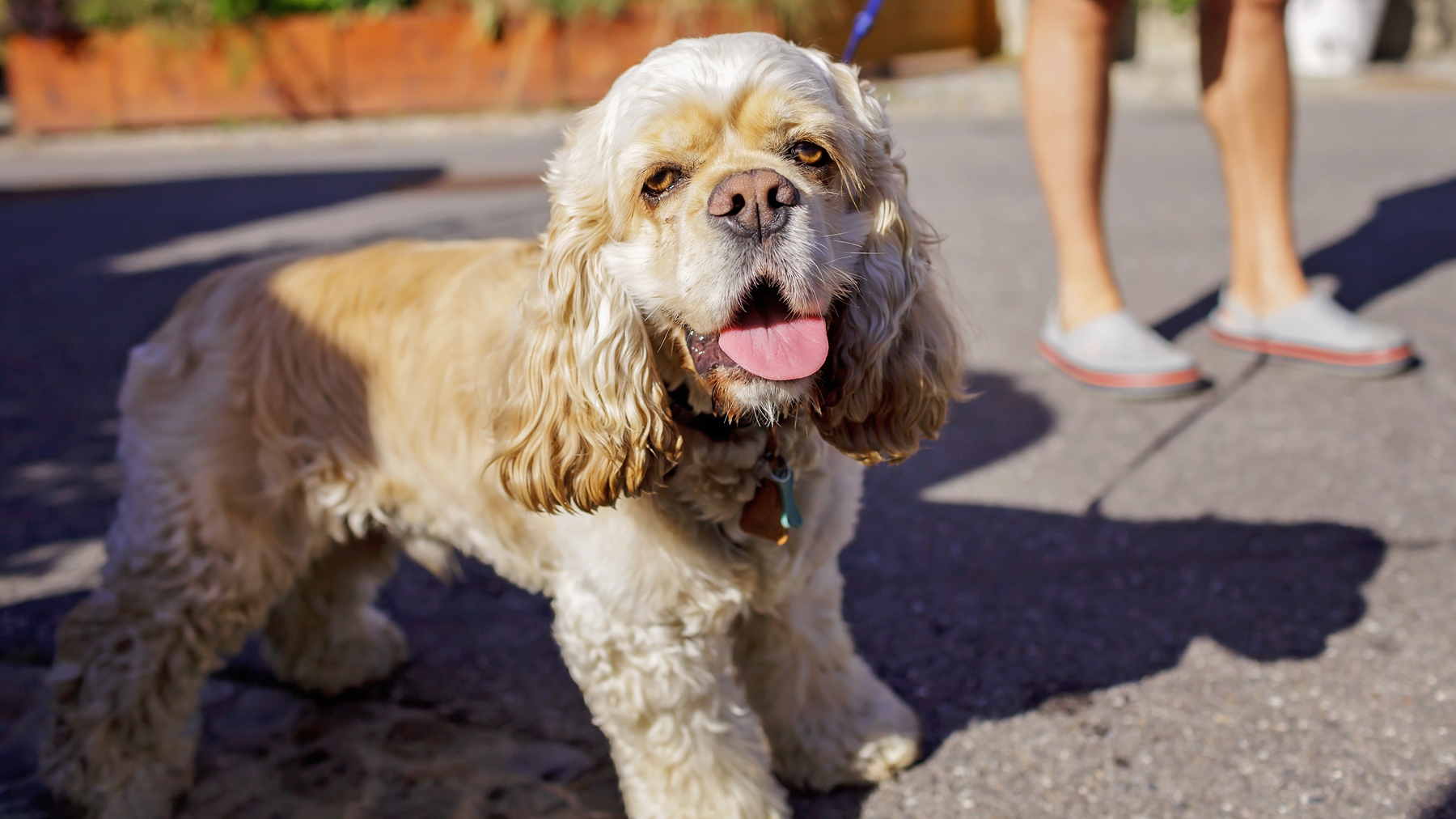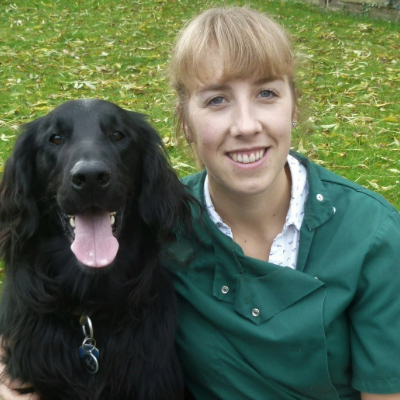When is it too hot to walk your dog?
When is it too hot to walk your dog? We asked an expert to find out.

When is it too hot to walk your dog? This is a question that lots of pup parents have as the weather gets warmer. Since there isn’t a definitive answer, it can be tricky to try and work it out, but things like the weather, the dog, and the length and intensity of the walk should all be considered.
Even the best dog breeds for hot weather can become uncomfortable when the mercury soars. Going for a walk in the wrong conditions can lead to issues like burnt paws, overheating, and heatstroke in dogs, with the latter being potentially deadly. Since dogs don’t sweat like we do, it’s important to learn how to cool down a dog, as it’s not so easy for them to do this.
To help you keep your dog safe, we asked expert vet Dr. Diana Hasler when it’s too hot to walk them. She’s also explained the signs your dog is overheating and how to exercise them if you can’t go outside.
When is it too hot to walk your dog?
There is no hard and fast rule about when it is too hot to walk your dog – in general, if it’s too hot outside for you, it will be too hot outside for your dog! Because dogs have fur coats and cannot cool down as quickly as humans, it will feel hotter to them than their owners. Dogs can develop heatstroke in temperatures as low as 70 °F, so it is always important for owners to monitor them closely in warm weather.
In addition to the temperature, factors such as wind and humidity influence how dogs handle the heat. Their size, coat, and health can also affect this. Certain dogs have a higher risk of overheating, including overweight and obese dogs, brachycephalic (or “flat-faced”) breeds like pugs and French Bulldogs, young puppies under six months of age, geriatric dogs, and dogs with underlying health conditions such as heart disease.
Another concern when it gets hot outside is the temperature of the ground. According to the ASPCA, at an outside temperature of 77 °F, asphalt surfaces can be as hot as 125 °F. Concrete can also heat up quickly, meaning that sidewalks and roads can easily burn dogs’ paw pads. A general rule is that if you can’t touch the ground for more than a few seconds, it’s too hot for your dog to walk on and you should consider sticking to grass and shaded areas.

Why is it a risk to walk a dog when it’s too hot?
In addition to the risk of burnt paw pads, dogs can easily become overheated in hot weather, which can progress to heatstroke—a sometimes fatal condition. This is one of the most common mistakes pet owners make.
Get the best advice, tips and top tech for your beloved Pets
The main cooling mechanism that dogs have is panting, but this does not cool them down as quickly as sweating in humans, and it becomes even less effective in humid weather. The normal body temperature of dogs ranges from 101 to 102.5 °F—heatstroke generally occurs when their body temperature rises to 105 °F or above.
Several studies have examined the risk factors associated with heatstroke. For example, a 2020 study published in Animals reviewed the veterinary records of over 900,000 dogs in the UK and found that exercise was the most common cause of heatstroke.
Another study published in Veterinary Sciences in 2022 found that fatal outcomes were more common among older dogs and brachycephalic breeds, with brachycephalic dogs being three times more likely to die than dogs with a normal skull shape.
Heatstroke can lead to multiorgan damage and even death. Its prognosis depends on the dog’s body temperature and how long the dog has been overheated. Dogs with heatstroke are more likely to survive if their condition is diagnosed and treated early, so all dog owners should be aware of the signs of heatstroke.
How to tell if a dog is overheating
Early signs that a dog is overheating or developing heatstroke include:
- Anxiousness or restlessness
- Heavy panting
- Increased heart rate
- Excessive dog drooling
- Dry mucous membranes
- Bright red gums and tongue
- Hot to the touch
- Excessive thirst in dogs
- Lack of coordination
- Lethargy in dogs
As a dog’s condition deteriorates, they may begin to show signs such as:
- Vomiting
- Diarrhea in dogs
- Seizures in dogs
- Rapid heart rate
- Irregular pulse
- Pale mucous membranes
- White or blue gums
- Collapse
- Comatose
Because of the risk of death, any dog showing signs of heatstroke should be moved out of the heat (ideally into an air-conditioned area) and cooled slowly. This can be done by applying damp, cool towels to the body (especially the belly), providing small amounts of cool water, and blowing a fan on them.
It is important to avoid ice or water that is too cold, as lowering the body temperature too quickly can result in dangerous changes in blood pressure.
Once the dog has been cooled slightly, they should be taken straight to their veterinarian in case they require additional treatment or supportive care. According to a review article published in Temperature, even with treatment, the mortality rate of heatstroke in dogs can be as high as 50%, so seeking prompt vet advice is imperative.
If you're wondering, 'Should I let my dog sunbathe?' This feature has the answer.

How do I cool a dog down fast?
Expert vet Dr. Rebecca MacMillan says: “If you think your dog may be overheating, then immediately move them out of any direct sunlight and to somewhere shady. Wet their fur thoroughly with cool water, you can use a large cup or jug to pour water all over them gently.
“Ensure that the water soaks through their fur, especially in thick-coated dogs. This cool water will make your dog feel more comfortable and will gradually evaporate using heat energy from your dog's body, which reduces their core temperature in the process. This is the same mechanism that occurs when we sweat.”
Is it okay to put a wet towel on my dog?
If your dog is overheating, you might be tempted to put a wet towel over them to cool them down. However, Dr. MacMillan advises against this - you’re better off using one of the best cooling mats for dogs.
She says: “These will quickly warm up from contact with your dog's body, and will only act to trap the heat in. You can help your dog cool even more rapidly by providing a breeze, using an electric fan can help with this. If your dog is conscious, then offer them some cool water to drink as well.
“You should call a vet immediately if you think your dog is suffering from heatstroke. However, taking these steps to try and reduce their temperature before transporting them could help to save their life.”
Ways to exercise a dog when it’s too hot to walk
Luckily, there are several ways to keep your dog cool in the summer while keeping them active. On warm days, dogs can be walked in shady areas and given frequent breaks to prevent overheating.
It will be best to avoid the hottest parts of the day, so owners may want to take walks early in the morning and in the evening once it has cooled down.
Owners should also consider walking their dogs on grass to avoid sore, burnt paws. Dog owners should always carry plenty of fresh, cool water to keep their pups hydrated.
On days when it is too hot to walk outside, owners can walk their dogs around the house, play with them inside, and provide mental stimulation in the form of the best dog puzzle toys. For high-energy dogs, owners can consider enrolling them in an indoor doggie daycare to burn off some energy. Nevertheless, keeping them safe and healthy in the summer is the number one priority!
You might also want to read: Do dogs sweat? Do dogs need sunscreen? How much water should my dog drink? Or, learn how to cool down a dog

Rebecca is a vet surgeon who graduated in 2009 from the Royal Veterinary College in London. She has a wealth of experience in first opinion small animal practice, having done a mixture of day-to-day routine work, on-call emergency duties and managerial roles over the years.
Dr. Diana Hasler graduated with distinction from the University of Edinburgh Royal (Dick) School of Veterinary Studies in 2018. She has experience working as a small animal veterinarian in general practice, where she has treated many dogs, cats, rabbits, and rodents. She has also recently branched out into the field of medical communications, doing freelance work as a medical editor and writer. Dr. Hasler has been Postdoctoral Research Fellow at Michigan Medicine since 2023, where she is a Laboratory Animal Medicine Resident.
- Dr. Rebecca MacMillanVet
- Megan MilsteadStaff Writer

